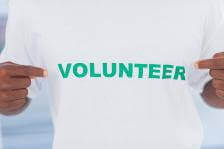How to Deal With Loneliness
Let’s call this an unconventional holiday special. Loneliness afflicts millions of Americans and the holidays are particularly hard for those who feel stuck out in the cold. This holiday season, Savvy Psychologist offers 8 tips to deal with loneliness.
Ellen Hendriksen, PhD
Listen
How to Deal With Loneliness

But Americans are a lonely bunch. Back in 2004, a large-scale survey found that 1 in 4 Americans had no close friends at all. And I’ll bet you a lonely partridge in a pear tree that the percentage is even higher now.
With so many people feeling isolated, you’d think everyone would be talking about it. But no one does. There’s a stigma to admitting you’re starved for company.
Defined, loneliness is perceived social isolation. It’s “perceived” because you can feel totally alone in the midst of a crowd, or you can feel connected and supported even when you’re by yourself.
But even if loneliness is perceived, there are lots of lonely people out there. Entrepreneurial sorts, for better or worse, have even started professional cuddling businesses. Yes, have someone come to your house and hold you for an hour. There’s even an app to match you with others in your area who just want to cuddle..
That’s definitely not an official tip, but let’s turn to them now. This week, we’ll cover 8 tips feel more connected. Expanding (and then maintaining) a social circle takes work and time, but rest assured, your people are out there:
Tip #1: Reconnect with Old Friends

If you’re hesitant to contact someone after some time away, turn the tables. How would you react if they called you? Probably delighted. Assume the same for them and make the call.
Tip #2: Challenge Your Expectation of Rejection
The lonely among us, it turns out, see the world differently. In a 2014 study, lonely and non-lonely college students watched video clips of lunchtime at college dining halls. In the scenes, there were always both positive and negative social interactions happening at any given time. The study participants might see positive interactions where someone smiles, nods while a friend talks, or leans into a conversation. But they also might see negative interactions, like someone turning his back or ignoring another person.
Here’s where it gets really interesting: Researchers used eye-tracking technology to see what parts of the scenes the study participants focused on. Lonely individuals immediately fixated on the negative interactions. They picked up on signs of potential rejection right away, perhaps better to avoid it and protect themselves.
See also: How to Grow a Thick Skin and Handle Criticism

But here’s the thing: The fears of lonely people don’t play out. Even though lonely people anticipate rejection, several other studies find they don’t actually get rejected. Instead, their expectation of rejection leads to avoidance or half-hearted attempts at socializing, which in turn makes others believe they’re simply not interested. Basically, it’s a big misunderstanding on both sides.
So what to do?…
Tip #3: Expect False Starts

But rest assured it’s not just you – acting weird when you’re lonely is so common it has a name: social evasion. When we perceive threat, we stay on the sidelines, where at least we know we’re safe, even if it leaves us lonely. So as you try to chip away at your loneliness, forgive yourself if you catch yourself in social evasion. And then…
Tip #4: You Don’t Have to Be the Life of the Party
You may worry you’re lonely because you’re too quiet, too introverted, or too shy. Luckily, the opposite of loneliness is not hard-partying extroversion. You don’t have to change your personality to find your people. Nothing is wrong with you.
The only thing you probably shouldn’t be is passive – not making eye contact, sitting in the corner, or not showing up in the first place – sends the message that you’re not interested.
But fear not. You can be actively engaged by listening attentively, asking questions, and simply being agreeable. You don’t have to be the life of the party, you just have to be present and pleasant.
Tip #5: Keep Showing Up

And then, keep showing up. I’ve said this before, but give any new social endeavor at least a season, or around 3-4 months. If, after that, you don’t like it or haven’t met anyone, you can throw in the towel, but hang in there until then. Repetition is key. The biggest reason people are friends? It’s not commonalities. It’s proximity. Again, keep showing up.
Tip #6: Join a Group and Then Help Lead it

Then, once you’ve established yourself, try to take on a leadership role. Having a role to play is a blessing for the shy among us because it requires less social improvising. You’ll have a set of duties and a reason to connect with everyone, even if it’s just to remind them to pay their quarterly dues or encourage them to donate to the food drive.
Tip #7: Set Aside Guaranteed Talk Time
Take a lesson – sign up for one-on-one dance lessons or music lessons where you have to talk to the instructor. Go into therapy where you talk with your therapist. It’s not a substitute for friendship, of course, but an hour of talking with someone interested in your life (or at least your tango progress) can’t be bad.
Tip #8: Use Each Bout of Loneliness as a Cue to Make Social Plans
Most of us don’t feel lonely all the time. Instead, it comes in waves. Each time loneliness flares – a weekend with no plans, a particularly sappy holiday special – use it as a cue to plan for the future. Whenever you feel lonesome, take action: Email a friend to meet up for a run next weekend or look at the schedule for that book group you’ve been meaning to join. It won’t make company appear in the moment, but you’ll have created something social to look forward to.
Start laying the groundwork this holiday season, and by this time next year, you’ll feel more connected and supported. And that’s a reason to clink a champagne flute.
How do you expand your social circle? Share your thoughts with us on the Savvy Psychologist Facebook page. And be sure to sign up for the upcoming Savvy Psychologist newsletter. It will arrive in your inbox in 2015, chock full of great advice to help you meet life’s challenges head on.
References
Bangee, M., Harris, R.A., Bridges, N., Rotenberg, K.J., & Qualter, P. (2014). Loneliness and attention to social threat in young adults: Findings from an eye tracker study. Personality and Individual Differences, 63, 16-23.
McPherson, M., Smith-Lovin, L., & Brashears, M.E. (2006). Social isolation in America: Changes in core discussion networks over two decades. American Sociological Review, 71, 353-375.
Jones, W.H., Freemon, J.E., Goswich, R.A. (1981). The persistence of loneliness: Self and other determinants. Journal of Personality, 49, 27-48.
Qualter, P. & Munn, P. (2005). The friendships and play partners of lonely children. Journal of Social and Personal Relationships, 22, 379-397.
Please note that all content here is strictly for informational purposes only. This content does not substitute any medical advice, and does not replace any medical judgment or reasoning by your own personal health provider. Please always seek a licensed physician in your area regarding all health related questions and issues.
Silent place and sad holiday images courtesy of Shutterstock.

